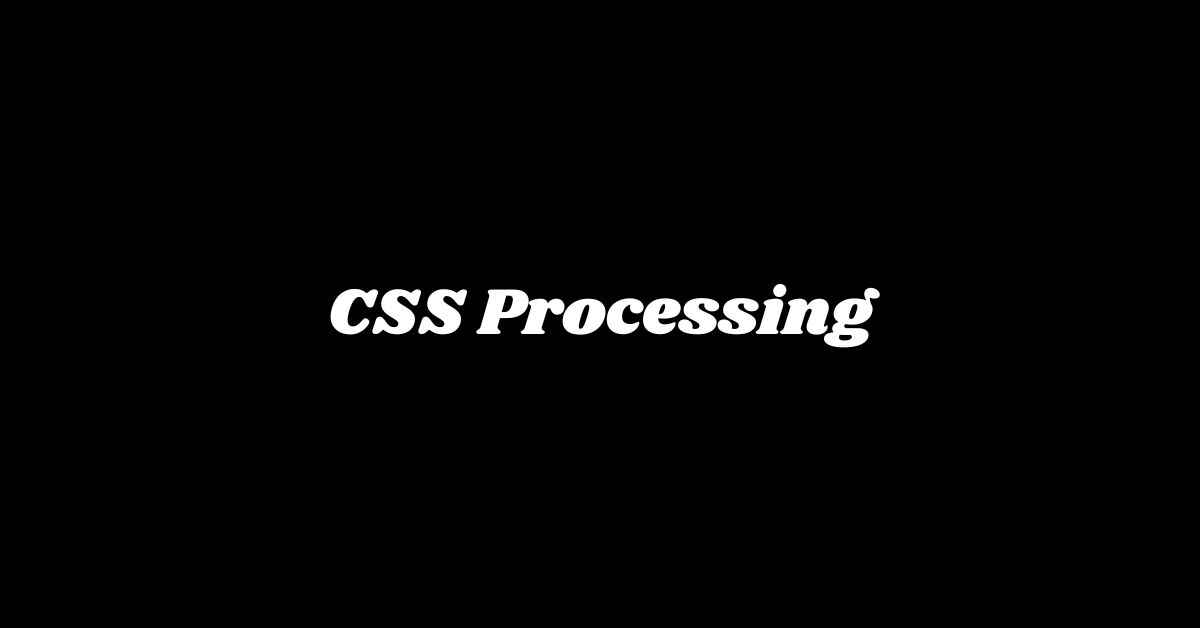|
Getting your Trinity Audio player ready... |
CSS Property Value Determination
In web design, determining CSS property values follows a precise process executed by browsers. It begins by deciphering which stylesheet declarations are most prominent. When styles conflict, specificity decides the winner.
Specificity isn't alone; inheritance also contributes, passing values from parent elements unless instructed otherwise. The cascade applies when multiple styles compete, implementing the most authoritative values.
The computed value resolves relative units to absolute lengths, pausing layout computations. This stage handles special cases like inherit and initial. It ensures that when CSS states font-size: 16px, the computed value understands the exact meaning.
The used value is calculated after the specified and computed stages. It addresses intricacies like percentages, refining them into pixel form. For example, if CSS declares width: 50%, the used value converts it to an exact pixel dimension.
Lastly, we reach the rendered value, displayed on screen. Browsers convert everything – accommodating quirks and resolving rendering issues. The browser's tool, getComputedStyle(), retrieves these values – useful for developers examining the process.
Cascade and Inheritance in CSS
The cascade algorithm acts as a director, orchestrating the scene where multiple styles from inline, external, or user stylesheets converge. Each style brings its specificity, weighing its importance. Through this process, the most authoritative style prevails, becoming the specified value.
Inheritance guides the flow of properties through the element hierarchy. Properties pass from parents to children, unless explicitly overridden. If a property is set on a parent, it flows down to its offspring, filling gaps where needed. When nothing is specified, inheritance provides the color of the parent element or assumes its computed values.
Processing CSS Values: From Specified to Used
- Specified values: Where CSS declarations initially appear, often containing potential in relative units or shorthand notations.
- Computed value: Acts as a translator, interpreting the developer's wishes into concrete terms. Relative units begin changing here.
- Used values: The process of refining computed values begins, as the element's layout context further specifies the final presentation.
- Actual values: The browser attends to every detail for rendering authenticity, adjusting for quirks and environmental factors.
Rendered and Resolved CSS Values
Rendered values, known as actual values, emerge after the browser completes the journey from specified to used values. They represent the pixel-perfect depiction of an element, accommodating both the original CSS intent and rendering engine quirks.
Resolved values provide insight into a property's state, crucial for developers examining stylesheet workings. When getComputedStyle() is called, the browser creates a CSSStyleDeclaration object, revealing property values as determined through specified priorities and inheritances.
The difference between actual and resolved values is subtle yet significant. While resolved values show the browser's computation choice for CSS properties at a given moment, actual values depict the screen reality, harmonizing specified styles with rendering limitations.
Key Properties Affected by Layout
Certain CSS properties are notably influenced by layout: width, height, and margin are prominent examples. These properties exhibit complex resolved and used values, and their final forms result from intricate calculations.
- Width and height: Shape the blueprint of digital spaces. When specified, they may appear as percentages or relative units, awaiting fulfillment.
- Margins: Negotiators of space, share a dynamic fate. Subtle instructions like
margin-top: 10%ormargin-right: autohint at intent within CSS.
Only during layout assembly are these instructions finalized. For margins, resolved values often adhere to computed resolution where possible, yet specifics can shift under unique layout pressures.
CSS transforms abstract intentions into tangible digital designs. As each value transitions from concept to screen, it shapes the web's visual appearance. This process illustrates how CSS creates an environment where every element finds its place with precision.
Writio is your AI content writer for website publishers. This article was crafted by Writio.
- Sellier A. Less: The Dynamic Stylesheet Language. GitHub. 2009.
- Catlin H, Weizenbaum N, Eppstein C. Sass: Syntactically Awesome Style Sheets. sass-lang.org. 2006.
- Holowaychuk TJ. Stylus: Expressive, Dynamic, Robust CSS. GitHub. 2010.
- Boere P. CSS-Crush: An Extensible PHP-based CSS Preprocessor. GitHub. 2012.
- Taylor IS. Myth: A CSS Preprocessor That Acts Like a Polyfill. GitHub. 2013.
Arsalan Malik is a passionate Software Engineer and the Founder of Makemychance.com. A proud CDAC-qualified developer, Arsalan specializes in full-stack web development, with expertise in technologies like Node.js, PHP, WordPress, React, and modern CSS frameworks.
He actively shares his knowledge and insights with the developer community on platforms like Dev.to and engages with professionals worldwide through LinkedIn.
Arsalan believes in building real-world projects that not only solve problems but also educate and empower users. His mission is to make technology simple, accessible, and impactful for everyone.



